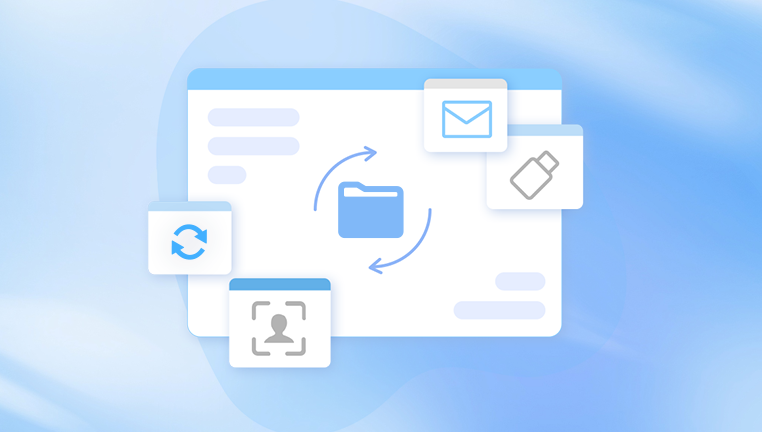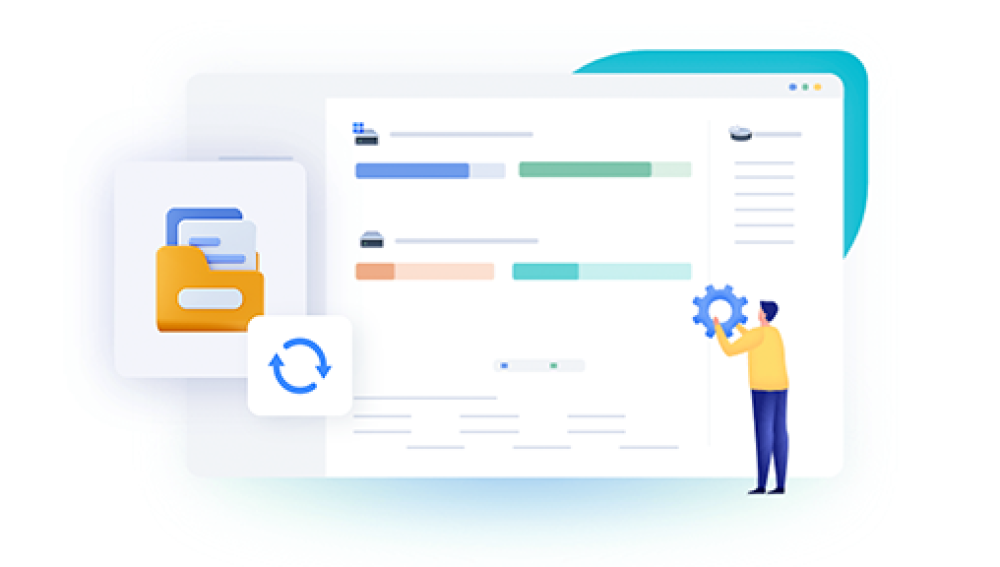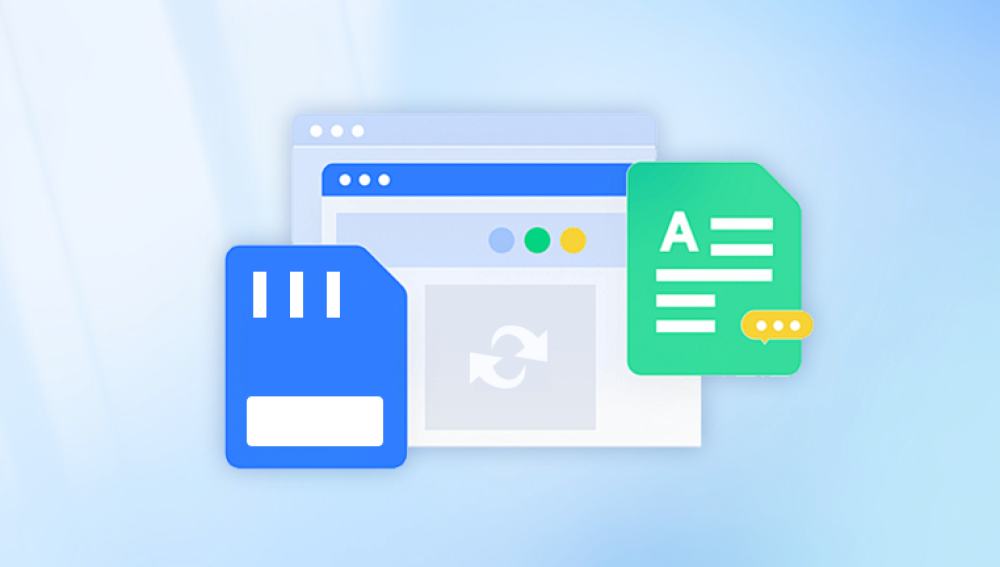Photos are more than just image files. They’re precious memories snapshots of birthdays, weddings, vacations, and everyday moments. But what happens when these images vanish from your device? Maybe your phone was factory reset, a folder on your laptop was deleted, or a memory card got corrupted. Whatever the cause, losing old photos can be devastating.
1. Common Causes of Photo Loss
How photo loss happens can help you both recover them and prevent future loss.
Accidental deletion – Deleting photos manually or emptying the Recycle Bin or Trash.
Formatting – Formatting memory cards, USBs, or hard drives without backup.
System crashes – OS failure or crashes during file transfer.
Malware or ransomware – Viruses can corrupt, hide, or delete files.
Corrupted storage – Memory cards, flash drives, or hard drives with bad sectors.
App bugs – Sync issues or bugs in photo apps deleting or hiding files.
Factory resets – Resetting a device wipes all local files unless backed up.

2. Can Old Photos Be Recovered?
Yes, in many cases, old deleted photos can be recovered—even if you deleted them months or years ago—if:
The files haven’t been overwritten.
The storage medium hasn’t been physically damaged beyond recovery.
You act quickly before new data takes their place.
Some recovery methods only work within a short time window (e.g., 30 days in “Recently Deleted” folders), while others like deep recovery software can scan entire drives for lost data—even from formatted or corrupt partitions.
3. How to Recover Old Photos on Windows
A. Check the Recycle Bin
Deleted photos may still be in the Recycle Bin:
Open Recycle Bin on your desktop.
Search or scroll through for your old photo files (usually .jpg, .png, or .raw).
Right-click and select Restore to return them to their original location.
B. Use File History (if enabled)
Go to the folder where the photo was last stored.
Right-click and choose Restore previous versions.
Select a version dated before the loss and click Restore.
C. Use a Data Recovery Tool
Drecov Data Recovery
Losing precious photos can feel like losing pieces of your past but with Drecov Data Recovery, there’s hope. Whether your images were deleted accidentally, lost during formatting, or vanished due to system crashes, Drecov Data Recovery is designed to bring them back quickly and efficiently. It supports recovery from hard drives, SD cards, USB flash drives, digital cameras, and even corrupted or damaged storage devices.
Drecov Data Recovery scans your storage deeply to uncover even the most hidden photo files. Its intelligent algorithms identify and reconstruct a wide range of image formats, including JPEG, PNG, TIFF, and RAW files from DSLR cameras. Even if the file structure is broken or the photos were deleted long ago, there’s a strong chance they can still be retrieved especially if the storage device hasn’t been overwritten.
The software is beginner-friendly, with a clean interface that walks you through the recovery process step by step. Simply choose the location to scan, let the tool do its job, and preview the found photos before recovering them. You don’t need any technical expertise.
4. How to Recover Old Photos on Mac
A. Check the Trash
Open the Trash icon on your dock.
Search for your deleted photos.
Right-click and choose Put Back.
B. Use Time Machine (if enabled)
Connect your Time Machine backup drive.
Open the folder where your photos were.
Launch Time Machine, browse past backups.
Select the photo files and click Restore.
C. Use Mac Photo Recovery Software
If Trash or Time Machine don’t help, try:
Disk Drill for Mac
EaseUS Data Recovery Wizard
Drecov Data Recovery (Mac version)
Install the software, scan your drive, preview found images, and restore selected photos.
5. How to Recover Old Photos from Android
A. Check Google Photos “Trash”
Open Google Photos app.
Tap Library > Trash.
Find your photo (kept for 30–60 days).
Tap Restore.
B. Recover from Google Account
Go to photos.google.com and sign in.
Browse albums and archives for your old photos.
Download them from the cloud.
C. Use Android Recovery Software
If the image isn't in Google Photos:
Use software like Dr.Fone, Tenorshare UltData, or iMobie PhoneRescue.
Connect your Android via USB with file transfer/debugging enabled.
Scan the phone storage or SD card.
Preview and recover found images.
Note: Rooting may be required for deep recovery.
6. How to Recover Old Photos from iPhone
A. Check Recently Deleted Album
Open Photos app.
Go to Albums > Recently Deleted.
Select and tap Recover.
B. Restore from iCloud
Go to iCloud.com > Photos.
Sign in and check your cloud photo library.
Download your lost images.
Or, on iPhone:
Go to Settings > Your Name > iCloud > Photos.
Make sure iCloud Photos is turned on.
C. Use iPhone Data Recovery Software
Try tools like:
iMyFone D-Back
PhoneRescue for iOS
Panda iOS Data Recovery
They can recover photos from internal memory or iCloud/iTunes backups.
7. Recovering Photos from Memory Cards and USB Drives
Photos lost from SD cards (e.g., cameras) or USBs can be recovered using:
A. Data Recovery Software
Insert the card/USB into your PC or Mac.
Launch tools like:
PhotoRec
Drecov Data Recovery
Stellar Photo Recovery
CardRecovery
Choose the drive and file type (.jpg, .raw, .png).
Start deep scan, preview results, and restore photos.
B. Tips for External Devices
Stop using the memory card or USB immediately.
Don’t format the drive again until recovery is complete.
Save recovered files to a separate drive.
8. Using Cloud Backups and Online Services
If you use online storage, your old photos might be saved there:
A. Google Drive / Google Photos
Sign in at drive.google.com or photos.google.com.
Use search filters (dates, keywords) to locate lost images.
Check Trash folders and shared drives.
B. Dropbox
Visit dropbox.com.
Use Deleted Files to restore files deleted within 30 days (or more with paid plans).
Use the Events page to track file changes.
C. OneDrive
Go to onedrive.live.com.
Look in Recycle Bin and Photos sections.
Restore or download your old photos.
9. Using Photo Recovery Software
A. Best Tools for Photo Recovery
Drecov Data Recovery – User-friendly, deep scan, preview photos before recovery.
Recuva – Lightweight and free for Windows users.
PhotoRec – Open-source and powerful, works on multiple OS.
Disk Drill – Advanced features for Mac and Windows.
Stellar Photo Recovery – Designed specifically for lost photos and videos.
B. How to Use Recovery Software
Download & Install the software on a different drive than where you lost the photos.
Choose the Device or Drive to scan.
Select File Types (e.g., JPG, PNG, TIFF).
Start the Scan – Quick Scan first, then Deep Scan if needed.
Preview and Recover the desired photos.
10. Best Practices to Avoid Losing Photos Again
Enable automatic cloud backup (Google Photos, iCloud, OneDrive).
Regularly back up to external drives or SSDs.
Use duplicate photo organizers to manage files better.
Don’t overwrite your storage if you suspect deletion.
Use antivirus software to avoid malware that may delete files.
Handle memory cards properly—never remove during writes.
Avoid saving files to your desktop or Downloads folder long-term.
Recovering old photos might feel like a daunting task—but with the right tools and timely action, it’s very achievable. Whether you’re using a Windows PC, Mac, Android, or iPhone, the combination of built-in tools, cloud storage, and powerful recovery software can bring your precious memories back to life.




